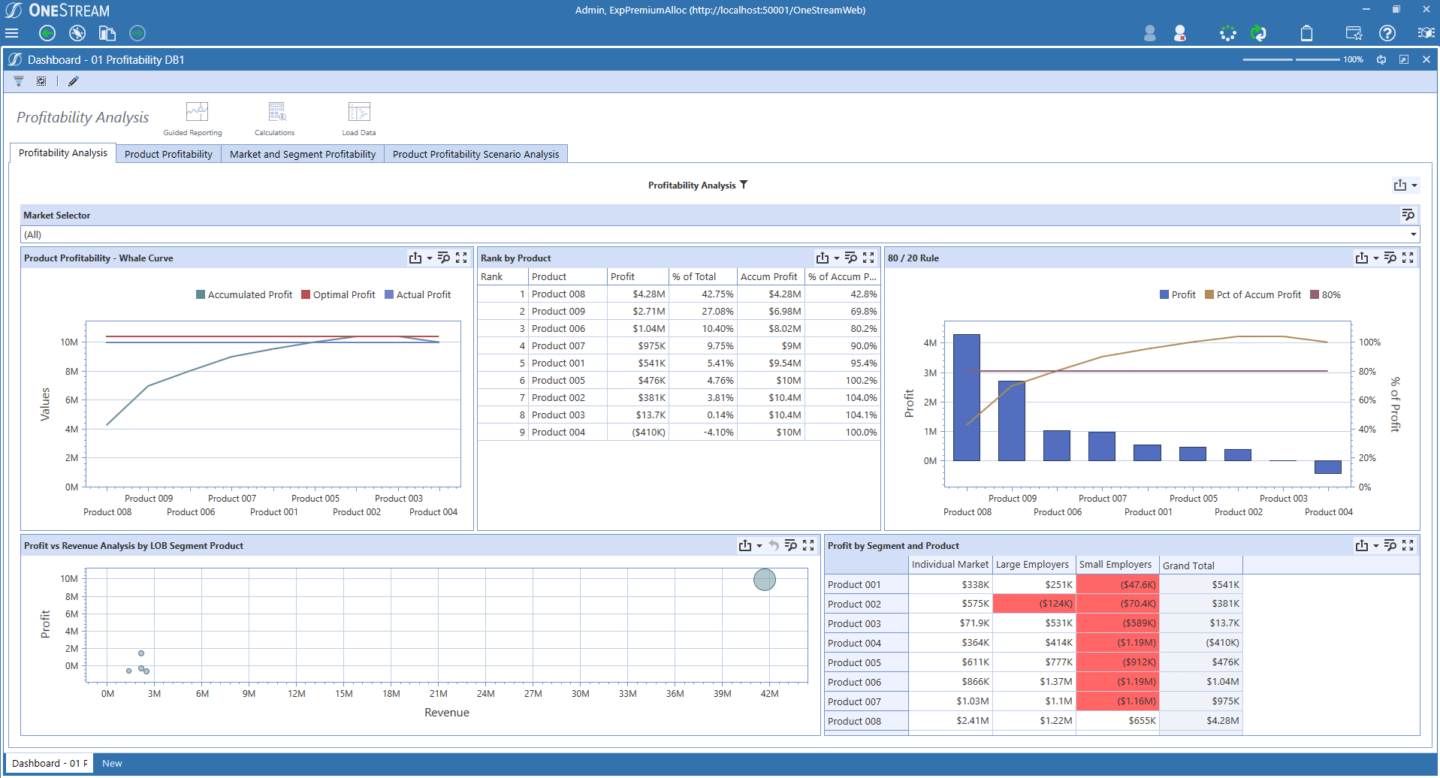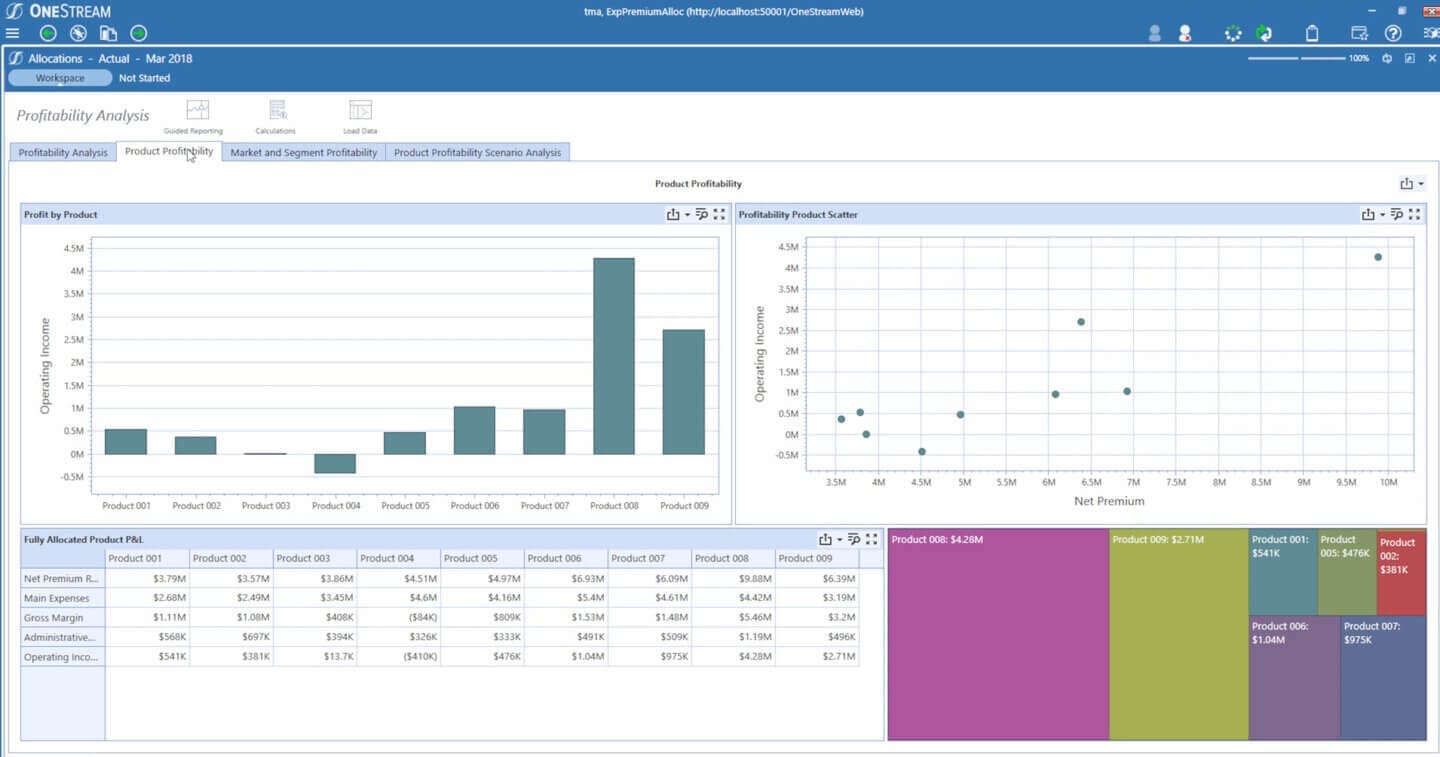Profitability analysis is an important and powerful tool for Financial Planning & Analysis (FP&A) professionals looking to drive business results. Such analysis not only shows what business units or product lines within an organization are profitable, but also helps model what-if scenarios – such as how pricing, new products and mix changes would impact customer and line-of-business profitability. In short, profitability analysis generates important data about the performance of business units, product lines, strategic initiatives and more to enable collaboration required for effective decision-making.
Profitability Analysis for Analyzing Business Results and Modeling Future Scenarios
Simply put, profit is defined as revenue minus expenses. Despite being a common area of interest to Finance, revenue is not always the best metric for the health of a product line or business unit. Profitability analysis, however, can help the organization understand what areas are performing well and which may need more attention or need to be reevaluated.
Using profitability analysis not only shows how these areas are performing today and how they have historically performed, but also models strategies for the future. Profitability analysis can model what-if scenarios to determine how price changes, new products and mix changes could impact customer and line-of-business profitability. The impact these changes have on the P&L, balance sheet and cash flow statements can be modeled and reviewed across the organization. By pairing profitability analysis with powerful reporting and analytics capabilities, Finance can quickly monitor dashboards and easily share results of the analysis with key stakeholders to make better-informed decisions and adjust strategies ahead of month-end close when results impact the financials.
Profitability Analysis for Better Financial Results
Understanding what business units, product lines, and initiatives within an organization are profitable and which are struggling is key to efficiently and effectively allocating resources across the organization.
By analyzing the profitability of different product lines or business segments, for example, FP&A teams can determine which products and services are most profitable, leading to better resource allocation to continue to drive profit in areas generating it while helping areas that are lagging. Additionally, profitability analysis can help identify cost-saving opportunities by identifying where to reduce expenses or when to negotiate better terms with suppliers.
Analyzing which areas constitute the top 80% of profitability performance (Figure 1) can help an organization better understand the drivers in the business and then allocate resources accordingly.

Profitability Analysis for Aligning Strategic Initiatives and Enterprise Goals with Profitability Results
In addition to showing which product lines and business units are performing – and where efforts are falling below expectations – profitability analysis can help FP&A teams understand the performance of strategic initiatives. For example, the results of a new marketing initiative can be analyzed using profitability analysis to understand what’s working and what’s not. Finance can then make adjustments to improve performance.
Additionally, profitability analysis can be used in the planning, budgeting and forecasting cycles by helping to identify the key drivers that forecast future financial performance. By analyzing past trends and identifying the drivers of profitability (Figure 2), Finance can more accurately forecast revenues, costs and profits.
By improving forecast accuracy and focusing efforts in the right areas, Finance provides a better guide for long-term planning and decision-making within an organization.

Profitability analysis is also an important tool for measuring a company’s overall financial health. A business unit or product line showing increased revenue does not always indicate increased profitability. By analyzing key financial metrics such as gross margin, operating margin and return on investment (ROI), Finance can determine the overall profitability of business segments, product lines and initiative across an organization. These metrics can also be used to benchmark the company’s performance against competitors, providing valuable insights into the company’s market position.
Conclusion
By analyzing profitability, Finance can identify which areas of the business are performing well and which areas need improvement. Additionally, profitability analysis can help evaluate the effectiveness of different strategies and tactics, forecast future financial performance and measure a company’s overall financial health. Ultimately, then, profitability analysis matters because it identifies what segments of the business and product lines are actually profitable, not just generating revenue.
Learn More
Want to learn more about OneStream’s profitability analysis offerings? Check out our solution brief about Conquering Complexity in Profitability Analysis.
Get Started With a Personal Demo


